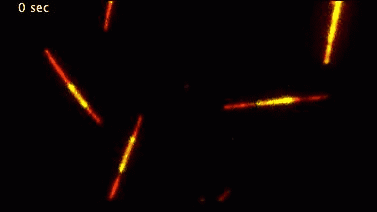Our lab is interested in understanding how large-scale cytoskeletal networks generate and respond to forces inside of cells, and to figure out how these mechanics contribute to the success of key cellular processes. We are particularly interested in how microtubule networks are organized and maintained during processes such as cell division and neuron growth. We are fascinated in understanding how nanometer-sized proteins work cooperatively to produce micron-scale cellular behaviors. And though decades of research has identified a majority of the biological 'parts' that are involved, we still do not understand the mechanical rules that dictate how all of these pieces work together to accomplish goals like the reliable segregatation of DNA into two new daughter cells or the establishment and maintenance of axons and dendrites in neurons.
